Volkswagen EPC Light – Meaning, Causes & Fixes
The Volkswagen EPC warning lights stands for Electronic Power Control warning light. This light is turned on automatically whenever something is at fault or not working properly in the Volkswagen throttle system. It works as a warning signal, much similar to the check engine light in all the other cars.
Purpose of Electronic Power Control (EPC) light:
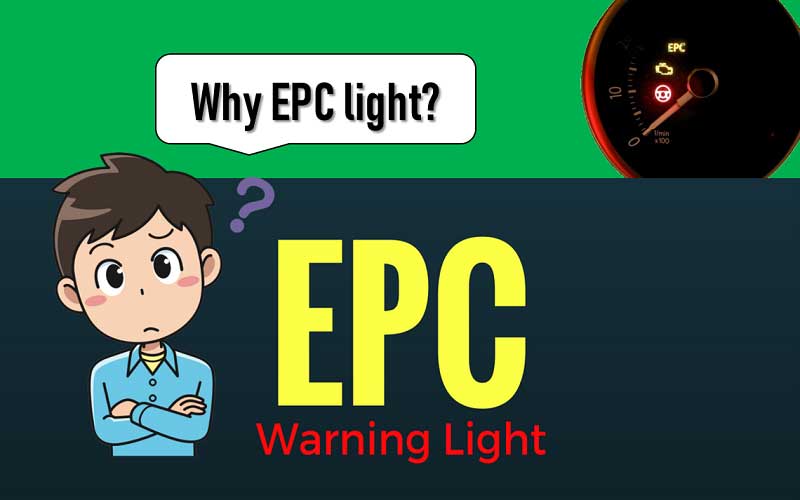
The purpose of this light is to warn you that there might be something wrong in the throttle engine of your vehicles, such as either the throttle body or perhaps the throttle pedal.
Or maybe the cruise or the traction control systems are faulty and should be checked out, repaired or replaced. Don’t be alarmed and act wisely.
There is nothing to worry about as your Volkswagen still has enough power to drive you to the repair shop, but it is important that you don’t delay it and drive elsewhere.
In some cases, the Volkswagen also comes with an installed ESP system. ESP stands for Electronic Stability Program. In such a case, the ESP will automatically turn your Volkswagen off if it senses any serious issue with the throttle system.
Causes of Volkswagen EPC light turning on and how to identify them:
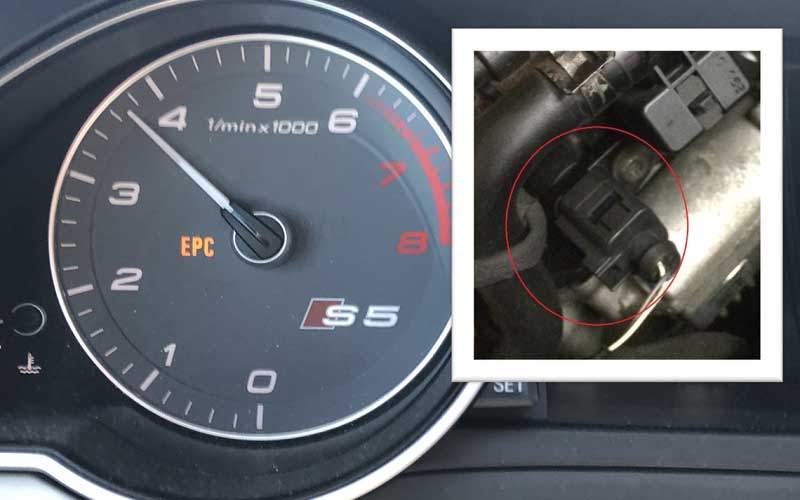
The first step to solving a problem is identifying it. In order to fix the problem, whichever part of the vehicle it may be, you first need to identify where the problem lies, which part of the vehicle needs to be repaired or to be replaced.
There are several reasons why the EPC light in your Volkswagen might turn on. Some of these are listed below, each with how to be identified, so you know what to replace or repair.
Throttle body failure
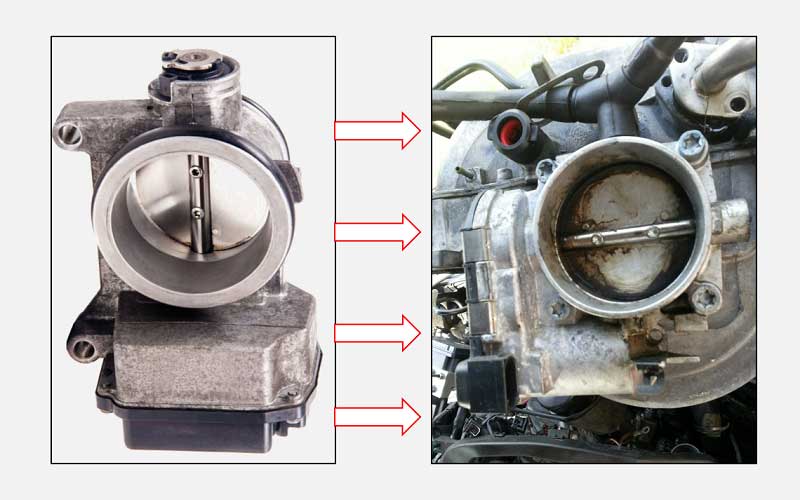
Some of the easy ways to identify if the problem is in the throttle body include to check if the vehicle stalls before coming to a stop or after it is started, you may notice a very low idle or even stalling if you press the throttle very quickly. This is due to the fact that the throttle body plate may open and close too quickly.
Faulty ABS Ring
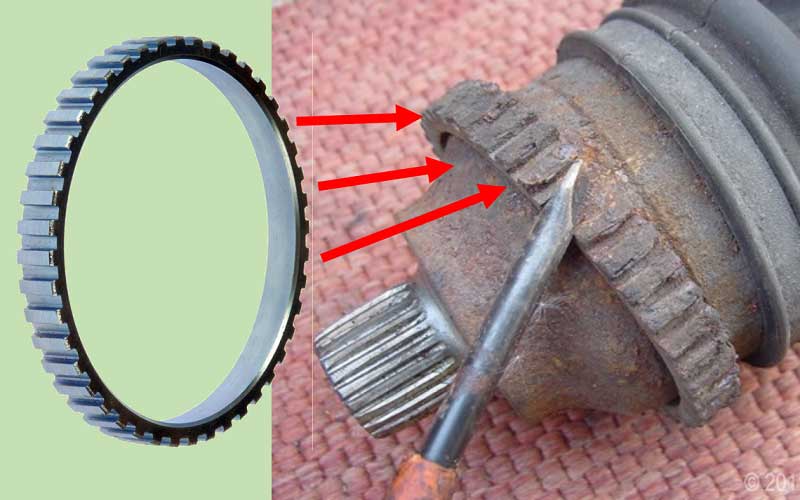
An ABS ring is located at the undercarriage of your car, which exposes it to a lot of debris, and it is likely that it may need repair or replacement after a while. The rear ABS rings are likely to be damaged more than the front ones.
In such a case, when the problem is with the ABS rings you might notice that the ABS light is turned on or at low speeds when the brake is applied you might hear it judder or make a banging noise of sorts.
If you apply the brake too hard, the ABS might actually disengage completely.
Read Also: Best Coilovers for Daily Driving
Problem in the engine internally
If the problem is in the engine internally, it might lead to several issues such as the vehicle driving roughly or the car making strange noises, oil stains, and a strange smell.
It might also lead to a clogged cooling system etc. it might also start using more gas than it normally does, and the engine power of the vehicle might also drop.
Getting this repaired should e your first priority, as replacing an engine can be quite costly.
Faulty Steering wheel sensor
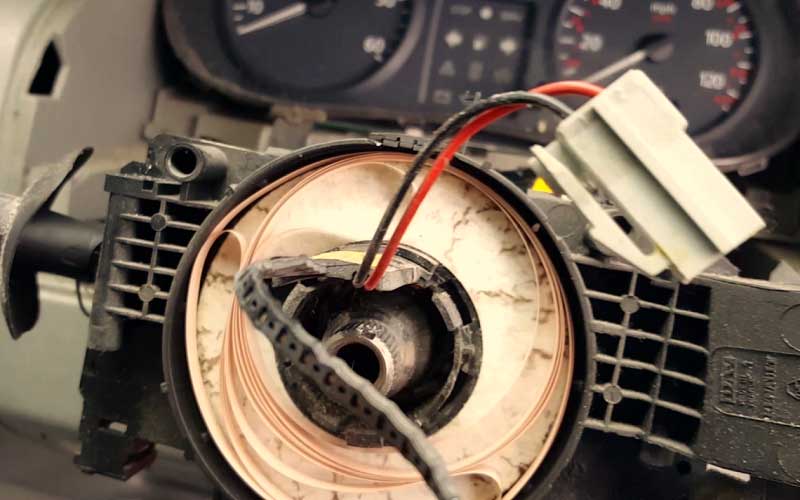
A faulty steering wheel sensor is pretty easy to identify. If the steering wheel sensor is damaged in any way, the signals it will send to the vehicle would not be aligned to the input you are giving to the car.
The steering wheel might feel like its loose, and it won’t entirely be in your control. This is dangerous and can even result in an accident, especially at high speeds.
Faulty Engine Sensor
The symptoms of this one again are pretty much similar to the ones that are observed when the fault is in the engine itself. If the engine light is turned off, you can e pretty much assured that the problem is with the engine or its sensors.
This may actually harm the vehicle’s engine, and hence it is important to be dealt with as swiftly as possible. Otherwise, it might lead to some serious damage and costly maintenance.
Read Also: How to Fix ABS Light
Faulty ABS sensor
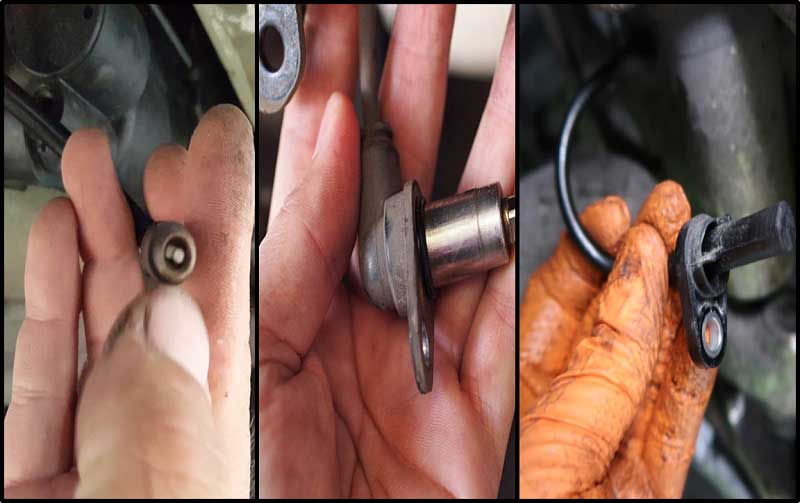
In order to tell that the problem is with the ABS sensor, you need to check if the ABS light is illuminated or not. This indicates that the issue is indeed in the ABS system.
Now, if the sensor is faulty, you might notice a pumping of sorts in the brake pedal, and while applying the brake, the vehicle loses control over the steering wheel. This makes the vehicle pretty vulnerable to be driven on wet roads.
A faulty brake pressure sensor
If the problem is in the brake pressure sensor, you might notice a vibration in the brake pedal, or at times, you might also notice that the brake is not being applied or the car is slipping, etc.
This, too, can be extremely dangerous and can cause accidents. Therefore it is recommended to get it checked as soon as possible.
Issues with the ABS sensor wiring
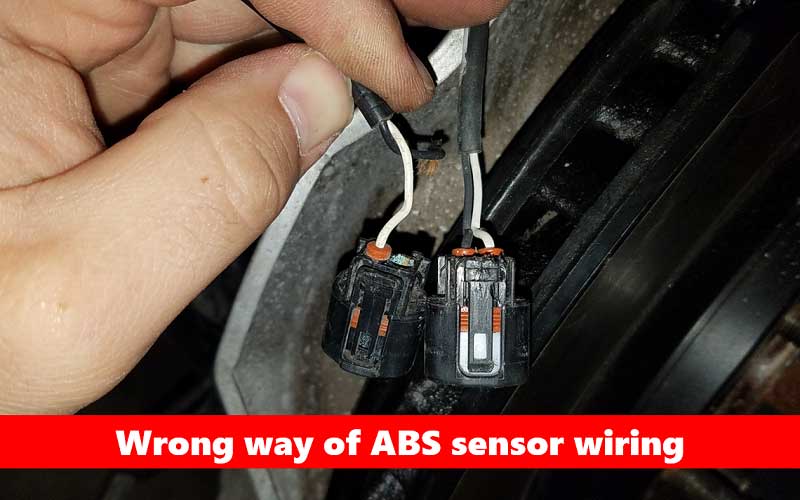
Again to check if the ABS wiring is loose or broken from a point, check if the ABS light is illuminated or not. If yes, then you might have noticed less control of the steering while applying brakes or a judder in the brakes.
The symptoms of the fault in the ABS sensor or its wiring are pretty similar, so in order to be sure, you need to consult a mechanic.
Read Also: ABS Light on The Dashboard
Failed brake pedal switch
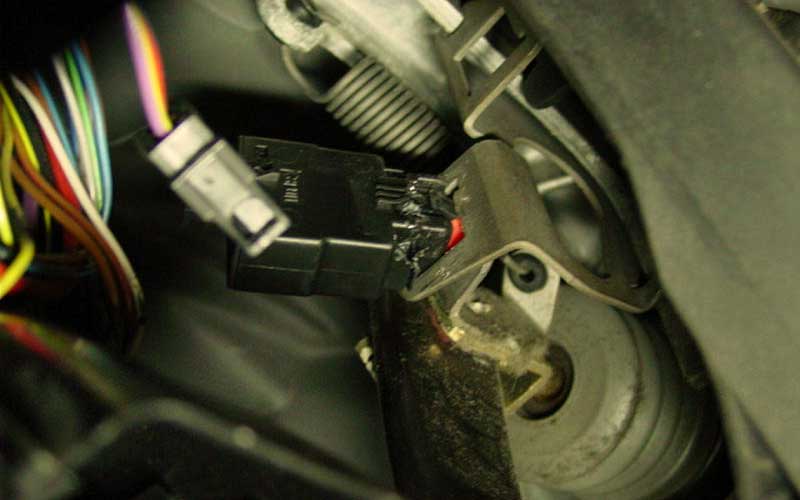
A faulty brake pedal switch can be identified with two major symptoms; one if the switch is at fault it may lead to the vehicle not starting in the first place, and secondly, it may lead to the brake lights being turned constantly, even if the brake pedal is not being pressed or it might not turn on at all.
Power steering failure
A power steering failure may lead to a reduction in the hydraulic pressure. You might even notice a leakage or a reduced level of hydraulic fuel.
Power steering failure can be identified by observing the following; whether the steering wheel is making any strange noise, if there are any vibrations in the steering wheel, or it is in any way difficult to turn the wheel.
This leads to a loss of steering control and can be damaging at high speeds in particular.
To fix Volkswagen EPC light:
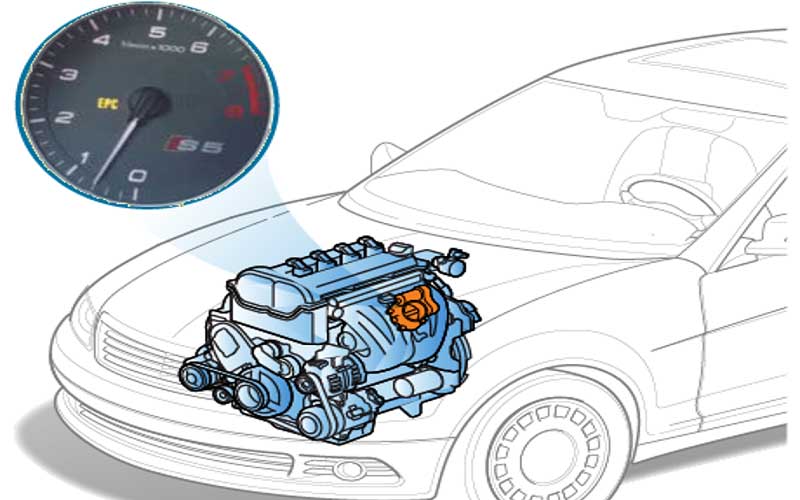
Now that you have identified which part of the car is making the problem, you need to fix it. For this step, it is important to be sure.
It is advisable in such a case, to either consult a mechanic or confirm it by using an OBD2 scanner. If you don’t have one or don’t know how to use one, you can take your vehicle to a repair shop, and they will do it for you.
Just make sure that the repair shop or the garage, wherever you take your car, has experience in dealing with your car brand and model as each car is different in its own way.
Read Also: 13 Best Car Wash Soap Review
How to identify and fix the problem with the help of an OBD2 scanner:
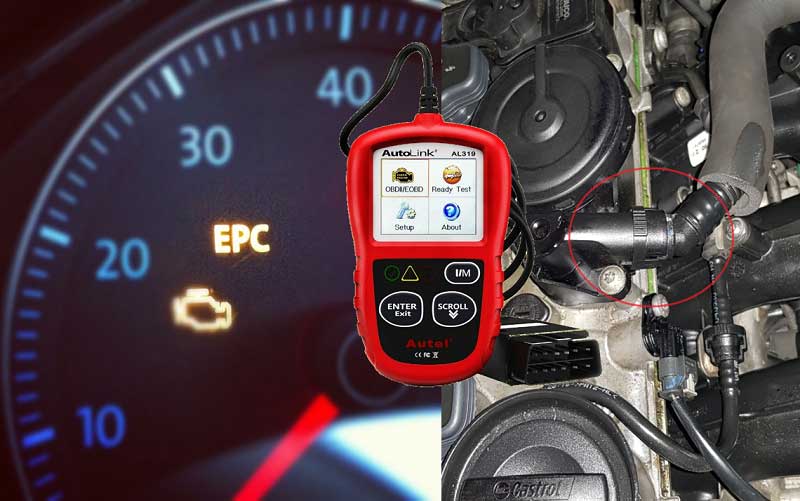
If you have an OBD2 scanner available at home, then you can diagnose the problem simply by comparing the trouble code with the codes given in the car’s manual.
All you have to do is scan each unit of the vehicle, such as the ABS unit or the steering control unit or the transmission control unit. Once you have the code, compare it with the given codes, and you will know exactly which part needs to be fixed or to be replaced.
Once you know for sure, which part whether it is any of the sensors or an issue with the wiring, or if it’s either the engine or the steering wheel or the brake pads, you can go to a repair shop to get it repaired, and the EPC light should turn off.
If it doesn’t turn off immediately, firstly try turning off and then turning on the car, and if it still doesn’t turn off, run it with an OBD2 scanner once again, to check for more problems.
Final Thoughts
Volkswagen EPC light is nothing more than a warning signal for the driver to let them know that there is something that is not working properly in the car.
It gives you the time to get the problem diagnosed and fixed before it turns in to a huge stress and causes you both time and money.
As soon as the EPC light is turned on, it is important to take your car to the right place and the right person as soon as you can.
Not all problems are as serious as the one with the engine and sensors, or the brakes or the steering wheel. These might have serious consequences, therefore drive safe, drive slow, and get it fixed.
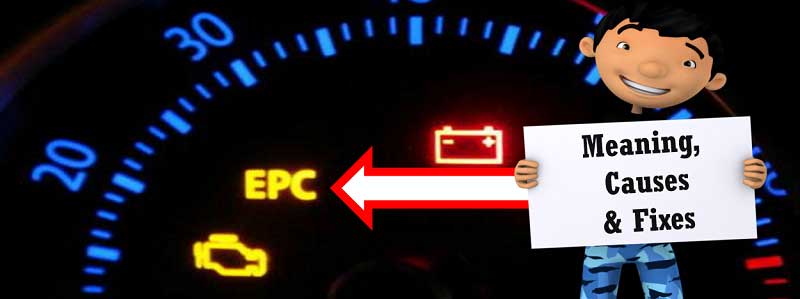

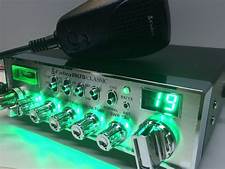



Post Comment